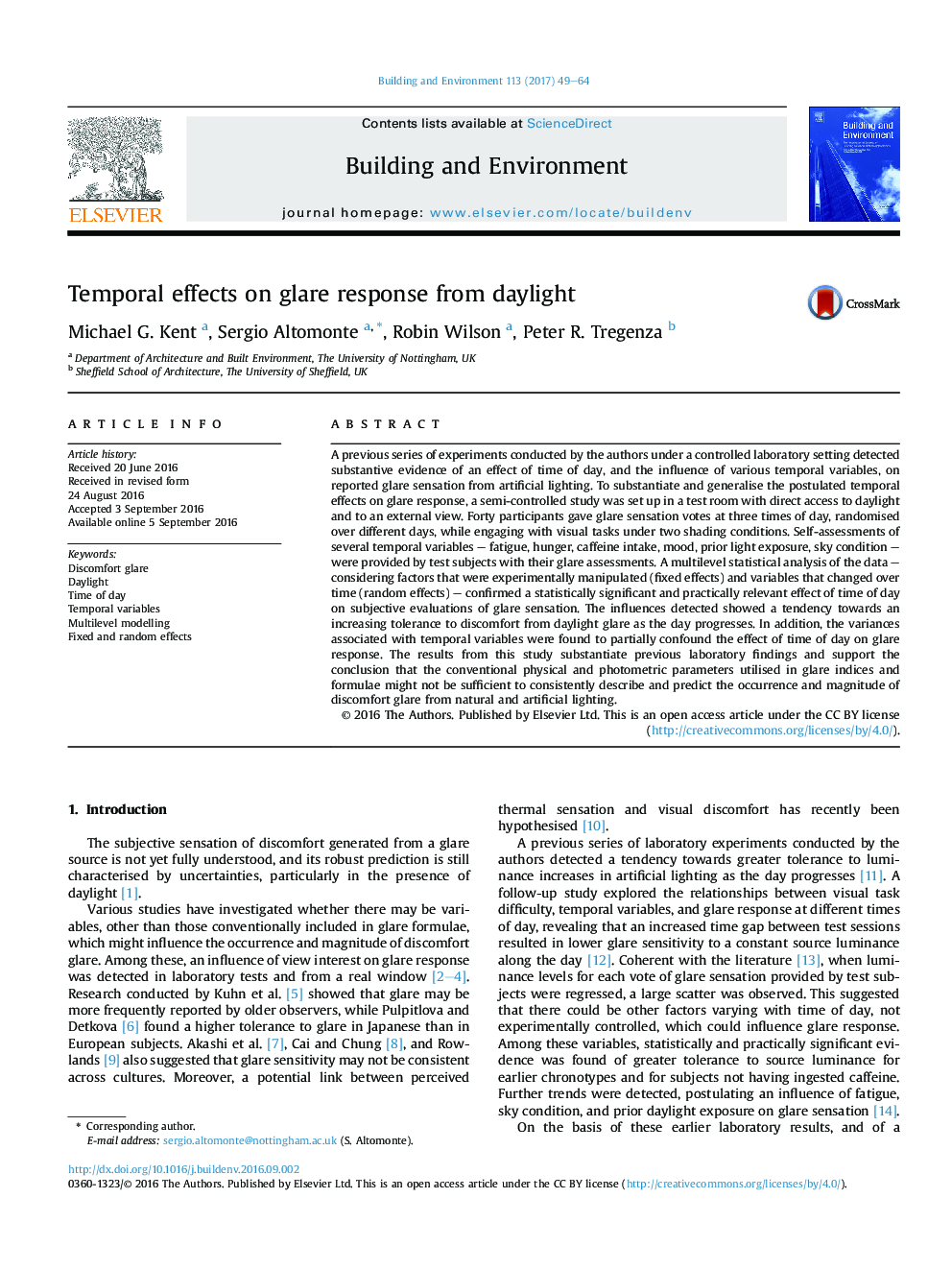| کد مقاله | کد نشریه | سال انتشار | مقاله انگلیسی | نسخه تمام متن |
|---|---|---|---|---|
| 4917350 | 1428379 | 2017 | 16 صفحه PDF | دانلود رایگان |
- Temporal effects on glare response were studied in a test room with daylight access.
- A multilevel model (MLM) with fixed and random effects was used to analyse the data.
- Significant and substantive influence of time of day on glare response was detected.
- Growing tolerance to discomfort from daylight glare was found as the day progresses.
- Variances associated with temporal variables confound influences on glare response.
A previous series of experiments conducted by the authors under a controlled laboratory setting detected substantive evidence of an effect of time of day, and the influence of various temporal variables, on reported glare sensation from artificial lighting. To substantiate and generalise the postulated temporal effects on glare response, a semi-controlled study was set up in a test room with direct access to daylight and to an external view. Forty participants gave glare sensation votes at three times of day, randomised over different days, while engaging with visual tasks under two shading conditions. Self-assessments of several temporal variables - fatigue, hunger, caffeine intake, mood, prior light exposure, sky condition - were provided by test subjects with their glare assessments. A multilevel statistical analysis of the data - considering factors that were experimentally manipulated (fixed effects) and variables that changed over time (random effects) - confirmed a statistically significant and practically relevant effect of time of day on subjective evaluations of glare sensation. The influences detected showed a tendency towards an increasing tolerance to discomfort from daylight glare as the day progresses. In addition, the variances associated with temporal variables were found to partially confound the effect of time of day on glare response. The results from this study substantiate previous laboratory findings and support the conclusion that the conventional physical and photometric parameters utilised in glare indices and formulae might not be sufficient to consistently describe and predict the occurrence and magnitude of discomfort glare from natural and artificial lighting.
248
Journal: Building and Environment - Volume 113, 15 February 2017, Pages 49-64
